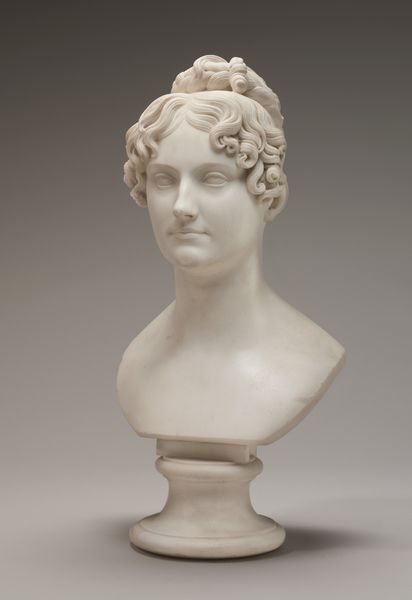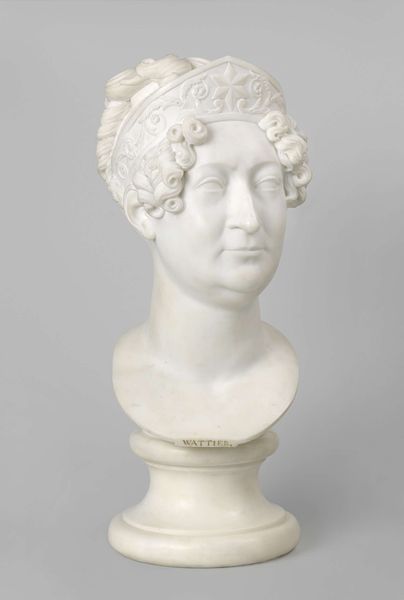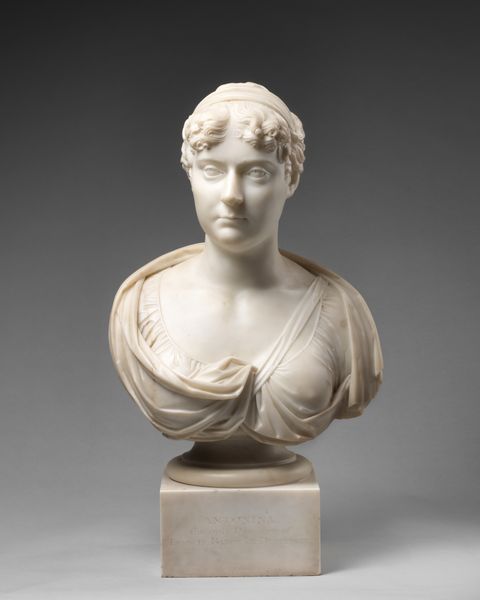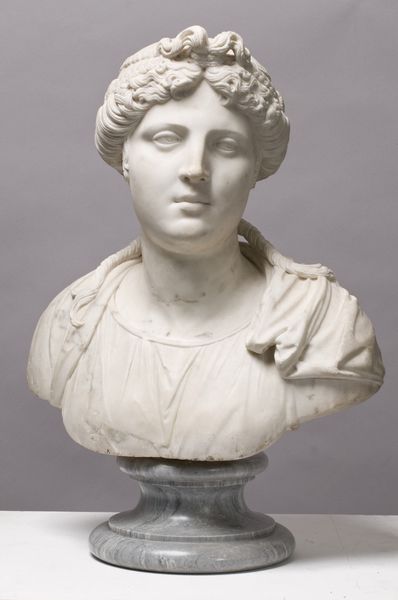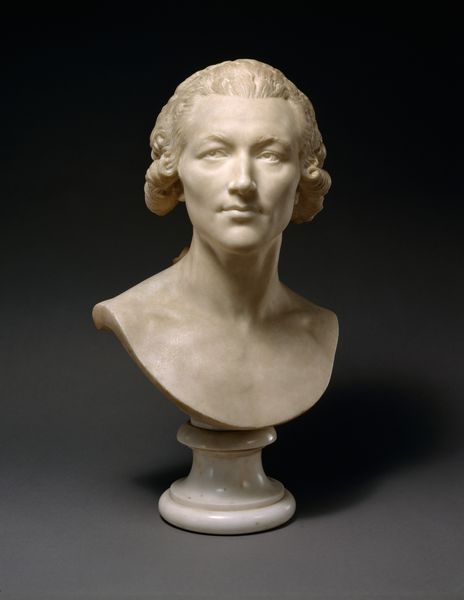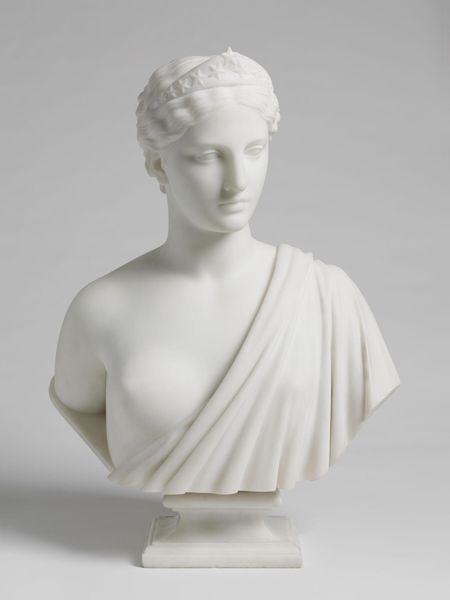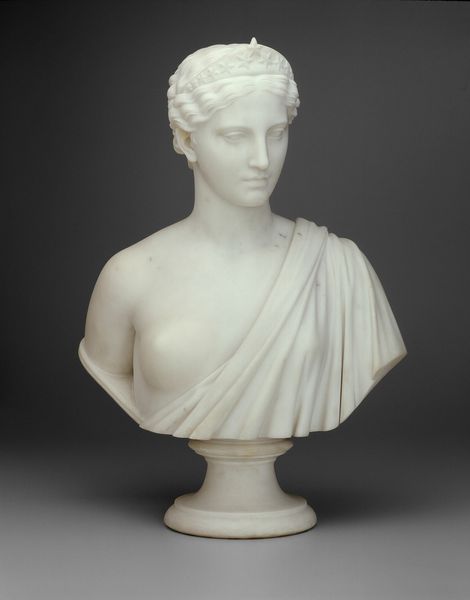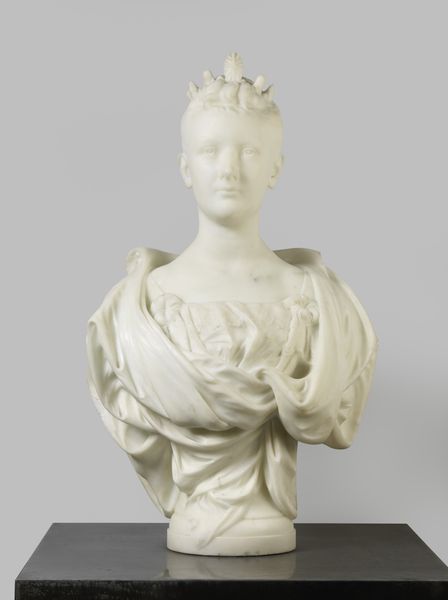
sculpture, marble
#
portrait
#
neoclacissism
#
classical-realism
#
figuration
#
form
#
sculpture
#
marble
Dimensions: overall without base: 42.86 x 17.78 x 20.32 cm (16 7/8 x 7 x 8 in.)
Copyright: National Gallery of Art: CC0 1.0
Editor: Here we have Bertel Thorvaldsen’s marble bust of Lady Elizabeth Vernon, created sometime between 1816 and 1821. It’s beautifully carved. There's a real sense of classical composure. What do you see in this piece? Curator: This bust strikes me as an interesting encapsulation of the Neoclassical movement and its relationship with power and gender. The choice of marble, the idealized features—these are all visual cues that invoke ancient Greek and Roman aesthetics, connecting Lady Elizabeth to an elite lineage of Western ideals. Editor: In what ways do those ideals speak to the sitter's identity? Curator: Well, consider that portrait busts, traditionally, were often reserved for men of importance. Lady Elizabeth's bust speaks volumes about her elevated social standing as a woman. How does the work grapple with societal expectations placed on women of her time? Is she meant to be seen as virtuous, intellectual, or perhaps simply a beautiful object? Editor: I suppose it's difficult to know her true character based on how she has been rendered, but certainly, the portrait communicates high social standing. The artist's focus feels like an elevation to the status of near goddess! Curator: Indeed, and consider the historical context. This was a period of immense social and political upheaval. The emphasis on order and reason in Neoclassical art was also a visual manifestation of anxieties about revolutionary sentiments. Perhaps this bust functioned as a deliberate attempt to anchor her, and those connected to her, within a perceived sense of stability. Editor: That really changes how I look at this artwork! Thank you! Curator: My pleasure. Art is powerful when we engage in this kind of dialogue.
Comments
No comments
Be the first to comment and join the conversation on the ultimate creative platform.
